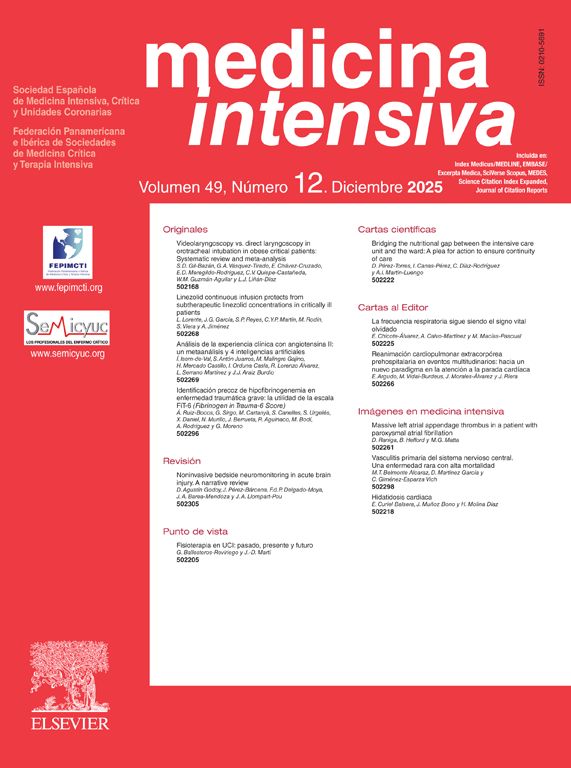A 33-year-old male was admitted to the Intensive Care Unit due to respiratory distress secondary to Legionella pneumonia, requiring neuromuscular block and prone decubitus upon admission. We conducted prior ultrasound-guided catheterization of the right cephalic vein at its final portion where the vessel drains into the subclavian vein. The Fig. 1 and Video 1 show a longitudinal view of the catheter guide crossing the junction of the cephalic and axillary veins towards the right subclavian vein. Correct positioning was confirmed radiographically (Fig. 1). Such catheterization offers an ultrasound-guided alternative to the infraclavicular subclavian vein, which is not always accessible to ultrasound, posing an increased risk of pneumothorax that should be avoided in patients with severe respiratory failure. On the other hand, positioning is more accessible during prone decubitus compared with other venous accesses (Supplementary images).
El factor de impacto mide la media del número de citaciones recibidas en un año por trabajos publicados en la publicación durante los dos años anteriores.
© Clarivate Analytics, Journal Citation Reports 2025
SJR es una prestigiosa métrica basada en la idea de que todas las citaciones no son iguales. SJR usa un algoritmo similar al page rank de Google; es una medida cuantitativa y cualitativa al impacto de una publicación.
Ver másSNIP permite comparar el impacto de revistas de diferentes campos temáticos, corrigiendo las diferencias en la probabilidad de ser citado que existe entre revistas de distintas materias.
Ver más









